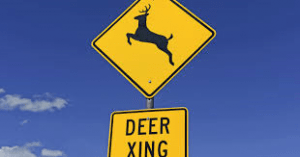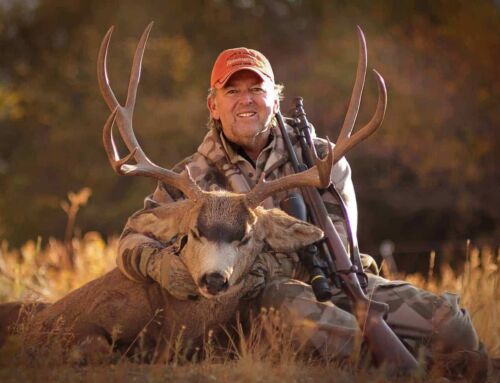The National Highway Traffic Safety Administration (NHTSA) estimates roughly 1.5 million deer-related accidents occur each year, and more than half of these accidents are in October and November, during the deer rut.
The NHTSA claims the average cost per accident is $1,000, which equates to an estimated $1.5 billion in total damages per year.
The average number of human deaths directly linked to deer-related collisions each year is 150 or higher.
To minimize your odds of hitting a deer, the folks at Carparts.com offer these tips:
Remember when deer are most active. Dusk, dawn, and between 12:00 A.M. and 2:00 A.M. If you absolutely must drive late in the dark, make sure you stay alert.
Make sure your car is in good shape. Check brakes, suspension, and tires to ensure optimal stopping performance.
Pay attention to the road and refrain from speeding. Speeding often leads to tunnel vision, which could explain why crossing animals often seem to appear out of nowhere. Slowing down helps your reaction time if a deer runs across the road.
Use high beams except on populated roads. High beams are designed to illuminate the road at a higher angle. Switching on your high beams when you can will help widen your vision in poorly lit areas with minimal traffic. Remember to switch back to low beam approximately 500 feet away from oncoming traffic so as not to temporarily blind oncoming drivers.
How to React When a Deer Jumps in Front of Your Car. The leading cause of injuries and deaths from deer-related accidents is the evasive maneuver drivers tend to do when they see a deer crossing the street. Swerving to the left would lead you into oncoming traffic, while swerving to the right could lead you into a tree, ditch, fence, or infrastructure.
If impact with a deer looks inevitable, to increase your chances of receiving minimal damage, hold firmly onto the steering wheel and apply the brakes until you’ve come to a full stop.
The best-case scenario is you’re able to stop before hitting the deer. But if hitting the deer is inevitable, aim to reduce the impact as much as possible. Make sure you don’t swerve so you don’t hit other cars or any hard objects on the side of the road.
Click here for more and to review an informative infographic from Carparts.
In the next blog: Post-collision, what to do if you hit a deer.







